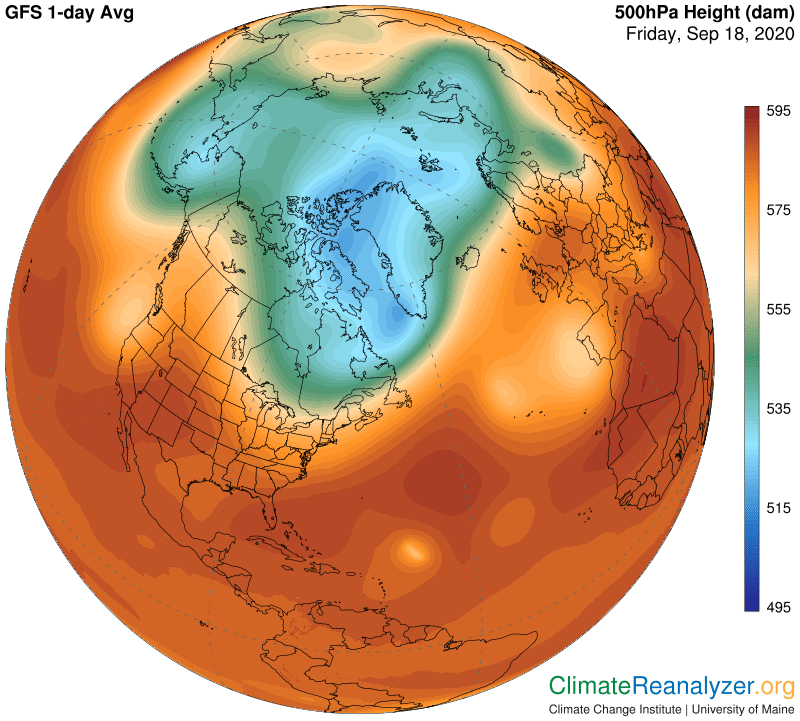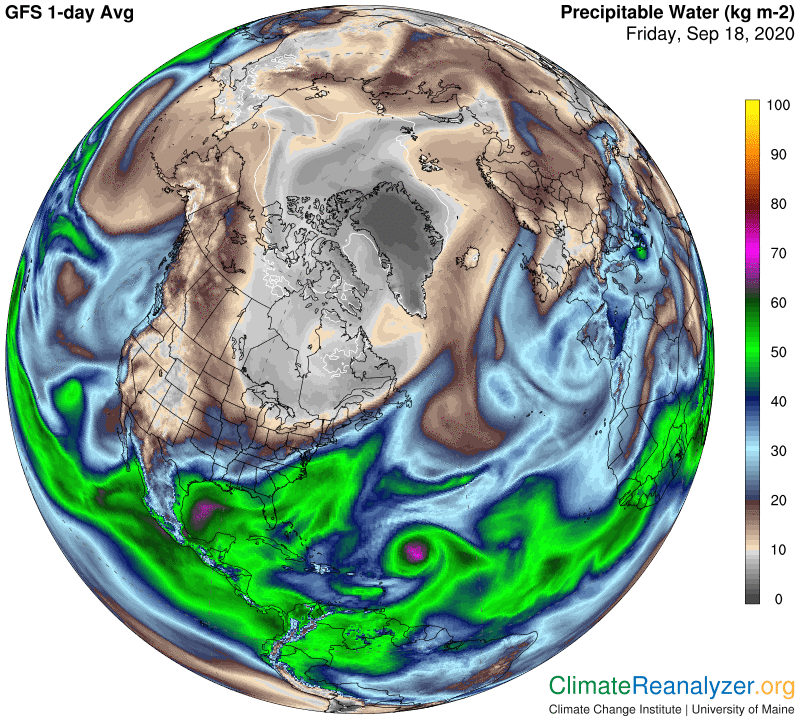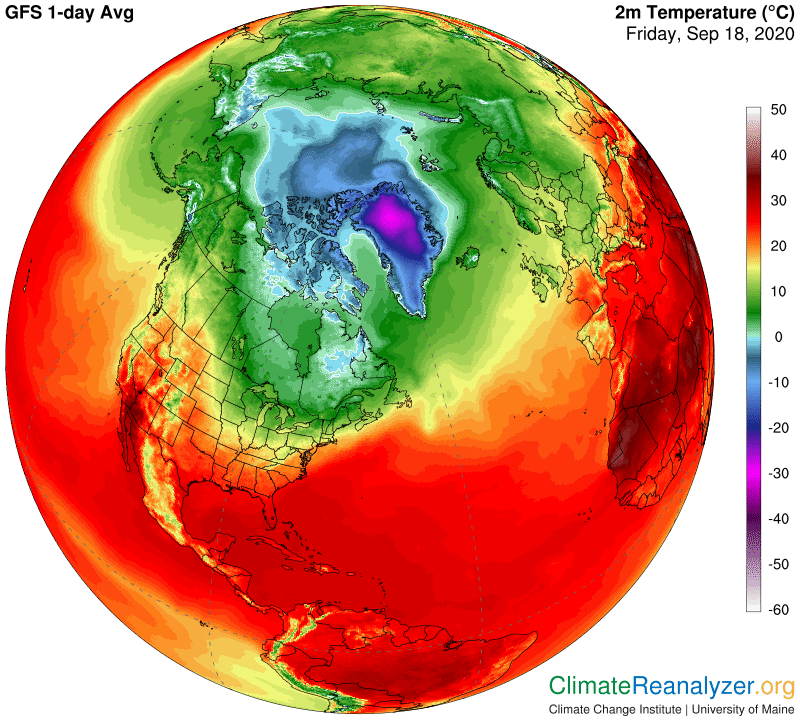Re the strong fundamental relationship between high-altitude air pressure configuration, the global distribution of precipitable water and actual surface air temperatures. The most solid indicators of that relationship are set up on a day like today, made possible only because the central core of air pressure configuration in the northern hemisphere has made a significant comeback from its long summer vacation. You can remember how disheveled the images have been, with pieces broken and scattered at times, sickly looking green zones and no blue zone whatsoever. In current images those things have all been fixed, although not as robustly as they will be when winter fully arrives.

Having a solid core like this normalizes the important jetstream pathway that is always present on the outer fringe of any green zone. Such fringes, remember, appear as the color-coded representation of an unusually sharp physical break in the depth of isobar values along a specific track of pressure change, enabling the appearance of higher wind speeds as a regular response. Even if speeds on the pathway are not at maximum, whenever the entire core is healthy the winds will be strong enough to hold back most further advancement of any water vapor streams that may be approaching the track. We can clearly see the effect in this next image, most decidedly along the entire rounded edge of the main bulge where the green zone makes a southward extension:

While other sections of the green fringe pathway are not as completely effective they still pose limits to the amount of water vapor that can enter into the core of the green zone. Because of the vapor’s great strength as a greenhouse gas these limitations become meaningful by virtue of the way they prevent immediate increases of air temperatures within the region. This next map is revealing, especially if you follow the shape of the temperature differential over the full course of the perimeter of the main bulge of the green zone to the south plus the large bulge next to it in the Alaska region. The effectiveness of the green zone jetstream is not as pronounced on other edges, but neither is it absent. The main insight gained from these images is that when the jetstream system is functioning at peak strength it has a genuine physical effect on the distribution of water vapor in the upper atmosphere, and by doing so has a genuine physical impact on air temperatures at the surface far below. The connections we see on a macro scale in these images are too strong to be a coincidence. They represent a rather mysterious way that nature really works.

What makes this relationship all the more interesting is the added observation that air pressure configuration is itself, to a large extent, dependent on the pattern of air temperatures directly below—for reasons detailed in previous letters—resulting in an effective feedback loop. The colder the surface air is in high latitude regions the greater the likelihood of air pressure changes of a type that causes jetstream pathways to be strengthened. This adds to their capability for blocking even more of the movement of high-altitude water vapor together with its greenhouse warming power, resulting in still more coolness at the surface. Fortunately there are other forces that get involved and keep the feedback loop from gaining a durable stranglehold, but short-term effects can still be considerable, as we learned from several extreme warming events this past summer.
Carl